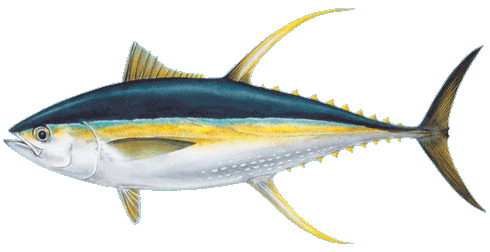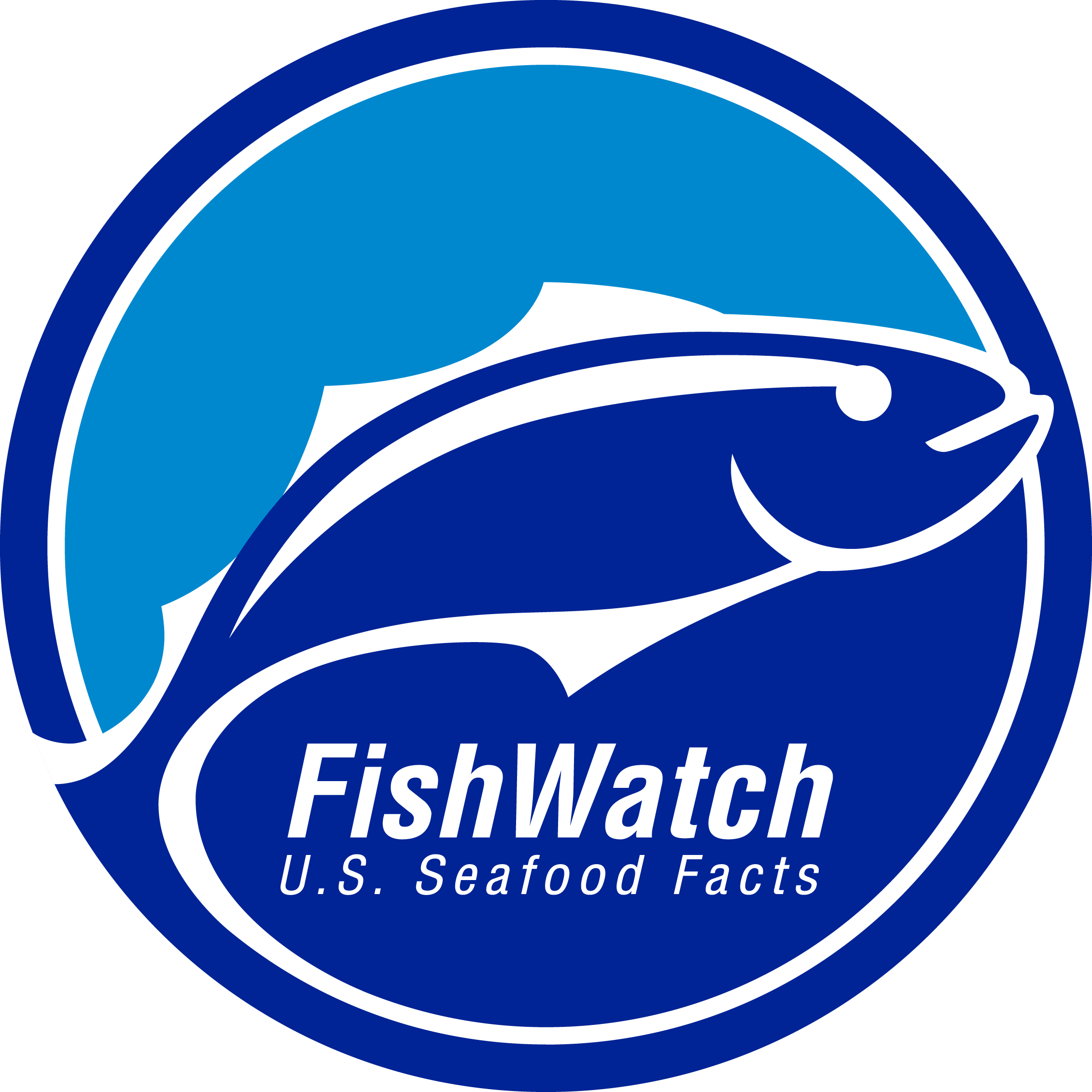
YELLOWFIN TUNA (AHI)
Scientific Name: Thunnus albacares
Hawaiian Name: Ahi
Japanese Name: Kihada
In Hawaii, “ahi” refers to two species, the yellowfin tuna and the bigeye tuna. It has a slimmer profile than the bigeye tuna, with distinctive soft dorsal and anal fins and finlets are bright yellow. The dorsal and anal fins tend to lengthen with age. Smaller yellowfin are also called “shibi” in Hawaii.
Yellowfin tuna has flesh coloration that ranges from pink in small fish to deep red in large fish. Large fish have greater potential to have a higher fat content than smaller fish, a desirable attribute for raw fish products, as well as for searing and broiling.
Fish landed in Hawaii range from 3 to well over 200 pounds. Smaller fish are usually caught around fish aggregation buoys and over seamounts. The large fish (over 100 pounds) are usually caught in deep open ocean waters. They are preferred for their typically higher fat content and greater yields.
Virtually all Hawaii yellowfin tuna is sold fresh.
FISHING METHOD
All Hawaii yellowfin tuna are line-caught. Most of Hawaii’s yellowfin tuna are caught by deep-set longline fishing gear off shore of Hawaii. The remainder of Hawaii landings come from trollers, handliners and pole & line boats (aku boats). Fresh Hawaii yellowfin tuna are not caught in purse seine nets as they are in fisheries that supply tuna canneries.
SEASONALITY
Caught year-round in Hawaii’s waters, yellowfin tuna is usually most abundant during the summer season (May-September).
PREPARATION NOTES
Texture: Firm
Flavor: Mild
Suggested Preparations: Raw (sashimi, sushi, poke), Seared, Grilled, Broiled, Sautéed, Dried
A preferred species for sashimi. Also excellent for grilling and in seared or “blackened” fish preparations. Its mild flavor and firm texture adapts well to numerous .
HEALTH & NUTRITION
Hawaii Yellowfin Tuna is an excellent source of healthy, extra lean protein. It is also low in saturated fat and low in sodium. It is rich in niacin, vitamin B6, vitamin B12, phosphorus and selenium. Hawaii Yellowfin Tuna is a good source of magnesium. Hawaii Yellowfin Tuna also provides about 350 mg of omega-3’s (DHA and EPA) per 4 ounce serving of fresh fish. Click here for nutritional labels and claims.
Click here to download a two-page description of this species.
SUSTAINABILITY
Current status: Hawaii yellowfin tuna are being fished sustainably. Overfishing is not occurring in the Hawaii fishery or in the western and central Pacific. Population is not overfished.

Visit our Sustainability page and the Pacific Yellowfin Tuna page at NOAA’s FishWatch.gov for more information.
The FishWatch™ emblem is a registered trademark of the National Oceanic and Atmospheric Administration and is used with permission.

